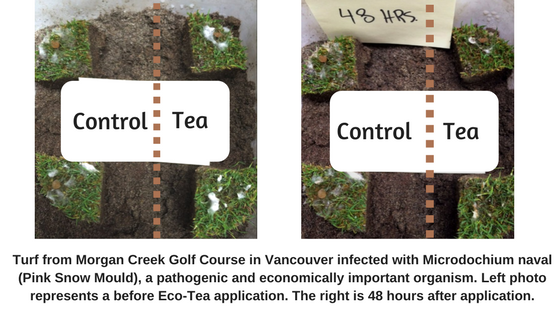Soil Management
By Dale Overton
The world of modern agriculture is as tech driven as the Internet. Software programs that run our lives can also help to precisely place fertilizer in a growing row crop. As technology moves agriculture in new directions with precision application equipment (GPS driven) and drones that collect data on soil and crop health, farmers continuously innovate and discover new ways to become more efficient and profitable. Increasingly, farmers are incorporating biotechnology into plant and soil management. Microbiology (synonymous with biotechnology) is coming of age and it is important for modern day farmers to understand how to successfully incorporate the principles into a successful formula.
It is well understood that having a healthy soil means profitable crops. But what defines a healthy soil? There is a growing movement in the microbiological field to study, understand and cultivate microbes that benefit plants and soils, and creates a measure for soil health. Arguably, the most important microbes in the soil have been identified as Plant Growth Promoting Rhizomicrobes (PGPR). Since the advent of next-generation DNA sequencing, PGPR have been the focus of many scientific studies to delineate their roles in plant growth.
There are five major functions of PGPR in the rhizosphere (the area of soil directly surrounding plant roots), which include:
- Phosphorous-solubilizing microbes – Mycorrhiza (fungi) and the bacteria genera Bacillus, Pseudomonas and Rhizobium have many varieties capable of solubilizing immobile P-complexes in soil. This can help reduce the total amount of P-applied to cropland by up to 20% in most Canadian soils.
- Nitrogen-fixing microbes – the bacterial genera Azospirillum, Arthrobacter, Acinetobacter, Bacillus, Burkholderia, Enterobacter, Erwinia, Flavobacterium, Pseudomonas, Rhizobium have varieties capable of fixing Nitrogen gas (from the atmosphere) to an organic form of Nitrogen available for plants. The best-known example is the nodulating Rhizobium sp. with legumes.
- Phytohormone-producing microbes – the bacterial genera Pseudomonas, Bacillus, Enterobacter, Aeromonas, Planctomyces, Acinetobacter, Achromobacter, Agrobacterium, Azospirillum, Burkholderia, Ralstonia, Serratia and Rhizobium have varieties that produce plant growth hormones. These groups are associated with the production of indole-3-acetic acid (IAA, a potent root stimulant), cytokinins, gibberellins and ethylene all of which have major roles in plant development.
- Antibiotic-producing microbes – the fungi Penicillium, Aspergillus, Trichoderma and the bacteria Streptomyces, Pseudomonas, Bacillus, Enterobacter, and Paenibacillus are known for containing antibiotic producing varieties that play a role in suppressing disease in the rhizosphere. Some 90% of the antibiotics used in medicine were derived from familiar fungi like Penicillium and actinobacteria Streptomyces. However, in the rhizosphere there are many more antibiotic-producing microbes yet to be discovered.
- Sidophore-producing microbes – the bacterial genera Bacillus, Rhizobium, Bradyrhizobium, Pseudomonas, Azobacter, and Enterobacter are capable of scavenging iron, providing a competitive advantage over pathogenic organisms in the rhizosphere. Iron is relatively unavailable to plants and in natural systems microbes mobilize iron for plant utilization.
Microbes in conventional systems:
It is no secret that conventional soil management, fertilizer and pesticide (herbicide, fungicide and insecticide) methods have negative impacts on the beneficial microbial community living on plants and in the soil. Without the reintroduction of these organisms, the soil will begin to lose vital system functions, creating a treadmill effect. That being said, there is no such thing as a “no-input management system”; as such, fertilizer and pesticides are required to maximize crop yields and manage potential disease threats.
Many microbial inoculants/products are available on the market, with most focused on one of the above-mentioned functions. Worm castings and compost provide two sources for a representative microbial community. However, many of these microbes are present at low abundance, so microbial foods are required to “wake up” the specific groups of PGPR.
For example, Eco-Tea™ (a commercially available liquid biological amendment) has been studied for the presence of PGPR. Eco-Tea claims to have all five functional groups present at high abundance (45%-70% community composition). The secret to creating and growing PGPR in solution is having a complex array of food sources: humic acids, simple and complex carbohydrates, long-chain amino acids, minerals and other microbial food sources. Moreover, the success of the program relies on application timing and plant-microbe contact. Other microorganisms of key importance in healthy soil include protozoa and beneficial nematodes.
At all levels of plant production, microbes should be exploited and used to increase plant health and decrease reliance on chemical-based products. Microbes are the key to sustainable agriculture for generations to come. A healthy microbial community can help reduce chemical inputs by 15-20% (or more), easily paying for added inputs and improving the bottom line. The nice part is that it also improves long-term soil health.
Don’t miss another FREE issue of Modern Agriculture Magazine (for Canadian addresses only)
[infobox title=’Contributor’]Dale Overton, President of Overton Environmental Enterprises Inc., is the founder of Eco-Tea, a professional ecologist and well-respected consultant. He is an industry leader in the development of advanced ecologically based microbial inoculants that increase plant and soil productivity. Dale is a passionate visionary and is helping to create sustainable agri-ecosystems.[/infobox]













